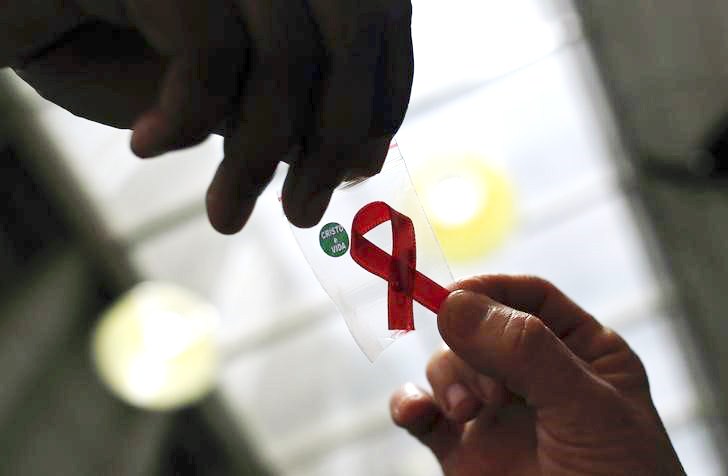
PARIS: Almost three in five people infected with HIV, or 21.7 million globally, took antiretroviral therapy in 2017, setting a new record for anti-AIDS drug access, the UN's HIV/AIDS agency said Wednesday.
There were 36.9 million people living with the immune system-attacking virus in 2017, of whom 15.2 million were not getting the drugs they need -- the lowest number since the epidemic exploded, UNAIDS reported. Hailing progress in curbing new infections and deaths, the agency nevertheless lamented the mounting human toll: almost 80 million infections and 35.4 million lives lost since the first cases became known in the early 1980s.
Progress made to date risks being halted, even reversed, if funding and world attention is allowed to dwindle, the agency warned.
"We are short $7 billion per year to maintain our results and to achieve our objectives for 2020," UNAIDS executive director Michel Sidibe told AFP. "Without these resources, there is a big risk of the epidemic rebounding, of an increase in mortality due to AIDS," he said.
132,000 people living with HIV/AIDS in Pakistan: survey
Despite more than three decades of research, there is no cure or vaccine and HIV-positive people have to take lifelong treatment that can be expensive and have nasty side-effects. ART inhibits the virus and can limit its spread between people -- mainly through sex -- but does not kill it.
UNAIDS reported large variation between world regions in the battle against the killer virus. In the Middle East and north Africa, for example, less than a third of people with HIV have access to ARV, only 36 per cent of those in eastern Europe and central Asia, and 40 per cent in west and central Africa. For west and central Europe and North America, the number is 78 per cent, with about 1.7 million out of 2.2 million infected people on ARV, said UNAIDS.
In east and southern Africa -- home to 53 per cent of people living with HIV in the world -- deaths declined by 42 per cent from 2010 to 2017, thanks largely to the widespread rollout of treatment. However, "there has been no reduction in AIDS-related mortality in eastern Europe and central Asia since 2010, and deaths from AIDS-related illness increased by 11 per cent in the Middle East and North Africa," cautioned the report.
HIV/Aids cases on the rise in Pakistan, says report
"Some countries continue to concern us, such as Nigeria which accounts for about half of all new infections in west Africa," said Sidibe. In Russia, he added, the epidemic "is becoming widespread. While it was concentrated among people who inject drugs, it is affecting the general population more and more." Sidibe blamed punitive laws, which instead of offering drug users access to clean, uninfected needles, force them underground "hiding and infecting their partners."
He also highlighted the particular vulnerability of children and teenagers. About 180,000 minors were newly infected with HIV in 2017, and about 110,000 died of AIDS, yet more than 50 per cent of under-15s had no access to treatment.
"This is unacceptable," said Sidibe, who warned of creeping apathy and "complacency" in the fight against AIDS. "We can win, but we haven't won yet," he said of the global battle.



































































COMMENTS
Comments are moderated and generally will be posted if they are on-topic and not abusive.
For more information, please see our Comments FAQ